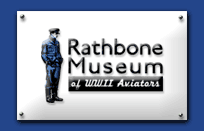








This page is dedicated to Max, his family, the crew and Penny Chisholm, daughter of the tail gunner Edward Chisholm.
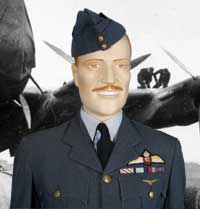
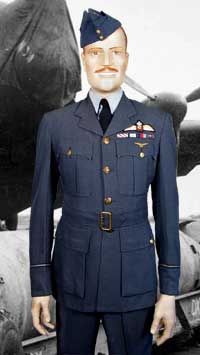

Robert Burton "Max " Maxwell was born in 1924 in Toronto, Canada. He joined the RCAF straight from school as a pilot in May 1942. He joined 428 (Ghost) Squadron RCAF as a Flight Sergeant in the summer of 1944. He started as a second pilot on Lancasters.
The tunic is Maxwell's later service dress tunic after he was commissioned as a Flying Officer. He completed 37 combat operations before he returned home in 1947.
The tunic is Maxwell's later service dress tunic after he was commissioned as a Flying Officer. He completed 37 combat operations before he returned home in 1947.
This side view shows the Canada shoulder titles. Behind F/O Maxwell, ordnance men bomb up a pathfinder Lancaster.
The RCAF service dress was identical to RAF dress with the single exception of nationality titles, RCAF buttons (optional) and RCAF wing.
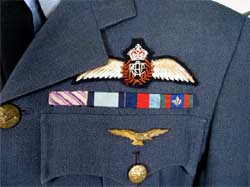
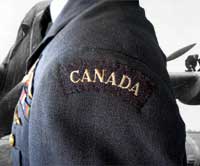
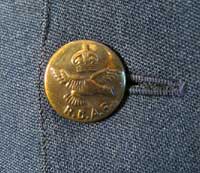
As a Flight Sergeant, Robert Maxwell performed an amazing act of bravery (documented below) which earned him the incredibly rare Conspicuous Gallantry Medal (Flying). Only 110 of these were awarded, as compared to 20,000 DFCs, 3,500 DFMs and 1,087 DSOs. Established in 1942 as a flying award, it was given only to noncommissioned personnel and was considered equivalent to the officers award of the DSO.
The Canada nationality tabs. Officers had a the name of the country only while enlisted airmen had an eagle as well.
F/O Maxwell's tunic has RCAF buttons, which are the same as the RAF but with the additional initials.
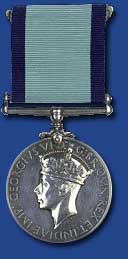
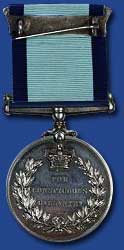
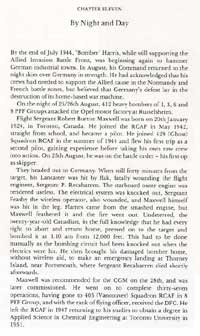
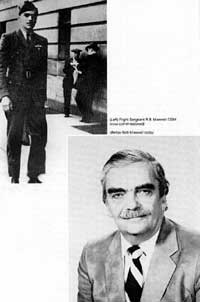
The CGM (flying) King George version, both obverse and reverse. The Flying version has a unique ribbon of dark blue and pale blue.
The story of how Robert Maxwell earned his award is told in Alan W. Cooper's book about all CGM holders, In Action With the Enemy. I have posted Maxwell's excerpt here.
Also from In Action With the Enemy, two great photographs of Robert Maxwell during the war and in later years.
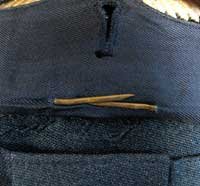
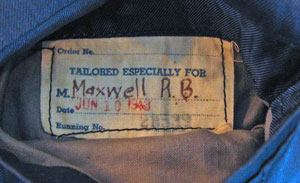
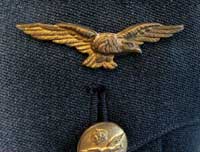
Maxwell flew as a Pathfinder in both 428 squadron and 405 squadron. This is his original badge.
As can be seen, the Pathfinder badge can be of simple construction with two big prongs to hold it to the uniform. Pathfinders were not allowed to wear these badges in to combat as they would be singled out for heavier interrogation.
The inside of the jacket with Maxwell's name and the date, June 10, 1943.
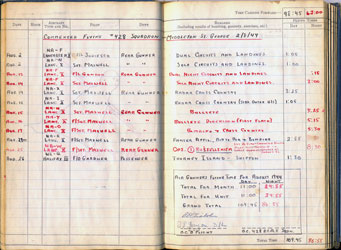
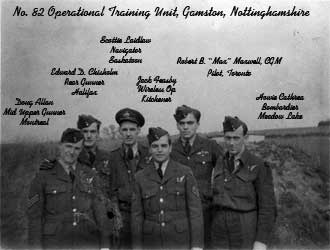
Max Maxwell and the crewmembers he flew with during his tour. (courtesy Penny Chisholm)
Ed Chisholm's Log Book with his entry for Ops 1 to Russellshiem. This was Maxwell's fateful CGM mission. (courtesy Penny Chisholm)
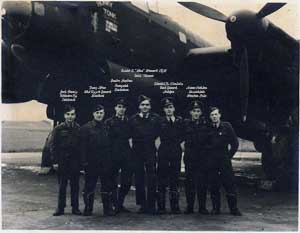

The crew of the Honky Tonk, an RAF Lancaster.
(courtesy Penny Chisholm)
(courtesy Penny Chisholm)
Another photo of Maxwell's crew in a rough and ready pose. (courtesy Penny Chisholm)
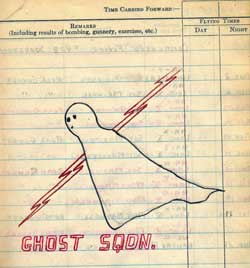
This great piece of art was drawn by Ed Chisholm, the tail gunner in Maxwell's crew, in his logbook. (courtesy Penny Chisholm)